Stainless steel consumption in India is growing at 7 - 9 percent annually since the last one decade as the country has now graduated as one of the top three consumers and producers in the world. Since most of the raw material is imported, domestic players remain under margin pressure. In such a situation, procurement planning and strategy will play a key role for meeting the increased requirement of raw materials which constitute around 70 percent of the total cost of production, said R Ganesh, Director - Sourcing, Jindal Stainless Limited in a freewheeling interview to Ritwik Sinha.

What is the current cost impact of importing ferro-nickel and stainless steel scrap?
Ferro Nickel (Fe Ni) and stainless steel scrap are two key raw materials used in manufacturing stainless steel. Almost 100 percent industry requirement for both these raw materials is met through imports alone as domestic availability is scarce. The pricing of Fe Ni and stainless steel scrap is completely dependent on the supplydemand scenario of Nickel in the market.
The pricing of both these inputs is also determined by the prevailing market prices of chromium (Cr) and mild steel scrap (MS Scrap). Broadly speaking, Nickel prices regulate the pricing of Fe Ni and stainless steel scrap. There is a scope of discount on Nickel at times but it varies according to market dynamics. There is 8-9 percent discount on Nickel as suggested by last few months trend. Moreover, there is a cost impact of 2.5 percent import duty on Fe Ni and stainless steel scrap which adds to the input cost.
Which are the countries from where ferronickel and stainless steel scrap are imported? What is the annual requirement?
Domestic Fe Ni requirement is completely met through imports as it is not available locally. However, stainless steel scrap is available in very limited quantity and not sufficient to meet the demand of stainless steel industry. Both the raw materials are sourced from all over the world like US, Europe, Middle East, South East and Far East, etc. The import requirement is not just met from one or two countries but business decision is taken on the immediate availability and quantity of the material. The annual requirement of Nickel including Nickel from Fe Ni and Stainless Steel Scrap is more than 65,000 tons.
What are the other materials imported by the stainless steel industry and by the company? Which are the major countries exporting the same?
Esta historia es de la edición February 2018 de Steel Insights.
Comience su prueba gratuita de Magzter GOLD de 7 días para acceder a miles de historias premium seleccionadas y a más de 9,000 revistas y periódicos.
Ya eres suscriptor ? Conectar
Esta historia es de la edición February 2018 de Steel Insights.
Comience su prueba gratuita de Magzter GOLD de 7 días para acceder a miles de historias premium seleccionadas y a más de 9,000 revistas y periódicos.
Ya eres suscriptor? Conectar

Steel's Net Zero mission
The country’s commitment to achieving Net Zero within a targeted timeframe will now propel its steel sector towards a sustainable future in line with global trends.
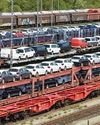
Fuel Price Hike, Supply Chain Disruption Hurt Festive Sales
Supply chain disruptions and fuel price hikes have hurt festive sales in a big way as most auto majors posted decline in sales in October.

Seaborne coking coal offers remain range-bound
Seaborne coking coal offers moved in a narrow range in October amid global supply tightness and healthy spot demand.

Global crude steel output down 8% in September
China manufactured 74 mt in September, fall of 21% y-o-y while India’s production went up by 7% to 10 mt.

MOIL embarks on expansion projects
“Even though our country is blessed with manganese ore reserves, we import 50% of the domestic requirement. We have to lower our import dependence and save precious foreign exchange.” Ram Chandra Prasad Singh, Steel Minister
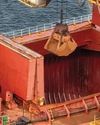
Iron ore handled by major ports down 17% in H1
The 12 major Indian ports handled 27 mt of iron-ore during H1 of 2021, down by 17% from 33 mt recorded for the corresponding period of previous year.
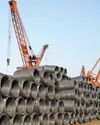
Shrinking China output to boost India exports
“In the third quarter of 2021, the company actively responded to the pressure from external policies, such as production curtailment and dual control system on energy consumption and intensity, as well as coal resource shortage and surging prices.” Baoshan Iron and Steel Co Ltd
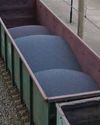
Indian Railways' iron-ore handling up 25% in H1
Indian Railways in April-September of 2021 (H1) transported 84 mt of iron ore, up by 25% over 67 mt during April-September 2020.
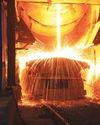
September crude steel production up 7.2% y-o-y
India’s crude steel production in September 2021 grew 7.2 percent to 9.547 million tons (mt) over September 2020 but was down by 3.2 percent from August 2021 output, provisional steel ministry data showed.

“Five enablers: way forward to sustainable cleaner steel”
Right and scalable technology, appropriate policy guidance by government, access to finance to fund transition, willingness of customers to pay for cleaner products and infrastructure for use of new technologies are the need of the hour for the sustainable and cleaner steel industry, according to Madhulika Sharma, Chief Corporate Sustainability, Tata Steel.